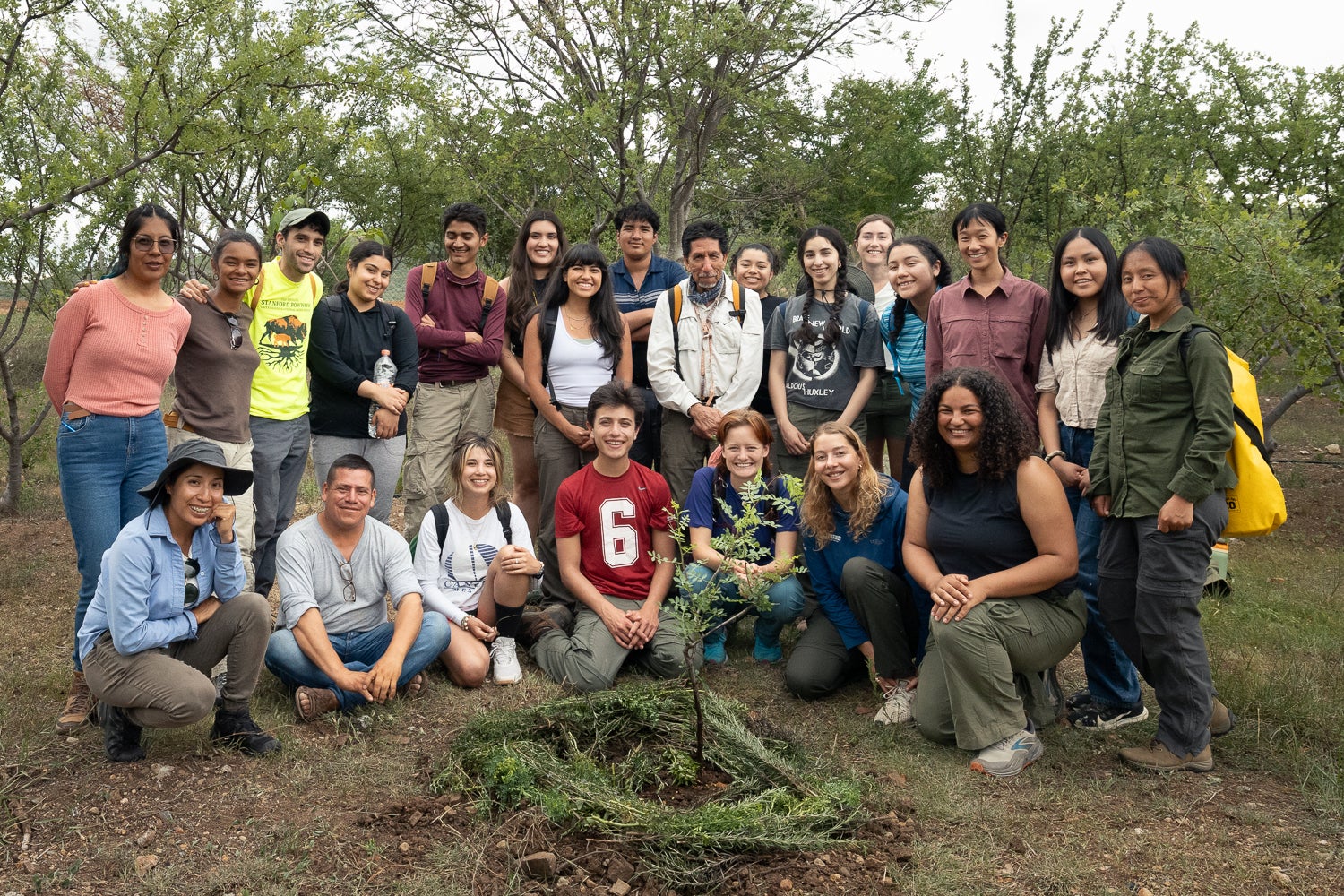Course in Oaxaca reveals the timeless dance between culture and biodiversity
A Bing Overseas Studies Program summer global seminar highlights gifts of global significance forged from the ancient interplay between indigenous communities and local ecosystems.
Go to the web site to view the video.
On a July afternoon, under an earthen overhang in Oaxaca, Mexico, a local guide lit incense from the resin of a copal tree. Fragrant smoke licked the air of the Guilá Naquitz Cave, and Stanford biologist Rodolfo Dirzo asked the 17 undergraduates seated on the cave floor to reflect on what this place meant to humanity.
At this site some 7,000 to 9,000 years ago, Indigenous peoples first domesticated teosinte – a weedy grass bearing perhaps a dozen kernels on each slender stalk – and began cultivating it into what we now know as maize, or corn. The plant became a dietary staple, shaping Indigenous societies and taking on practical and symbolic cultural significance. The people, in turn, made maize dependent on their care and bred it into a cornucopia of shapes and sizes, colors and textures, and flavors for different cultural occasions and growing conditions.
The saga offers a prime example of bio-cultural diversity – what Dirzo, associate dean for integrative initiatives in environmental justice and Bing Professor in Environmental Science in the Doerr School of Sustainability, describes as the process by which human cultures and local ecosystems influence how each other evolves. Dirzo brought these students here as part of his Bing Overseas Studies Program Global Seminar, Bio-Cultural Diversity and Community-Based Conservation in Oaxaca, to experience that relationship in action, and to conduct research alongside local environmental stewards working to keep it strong and healthy.
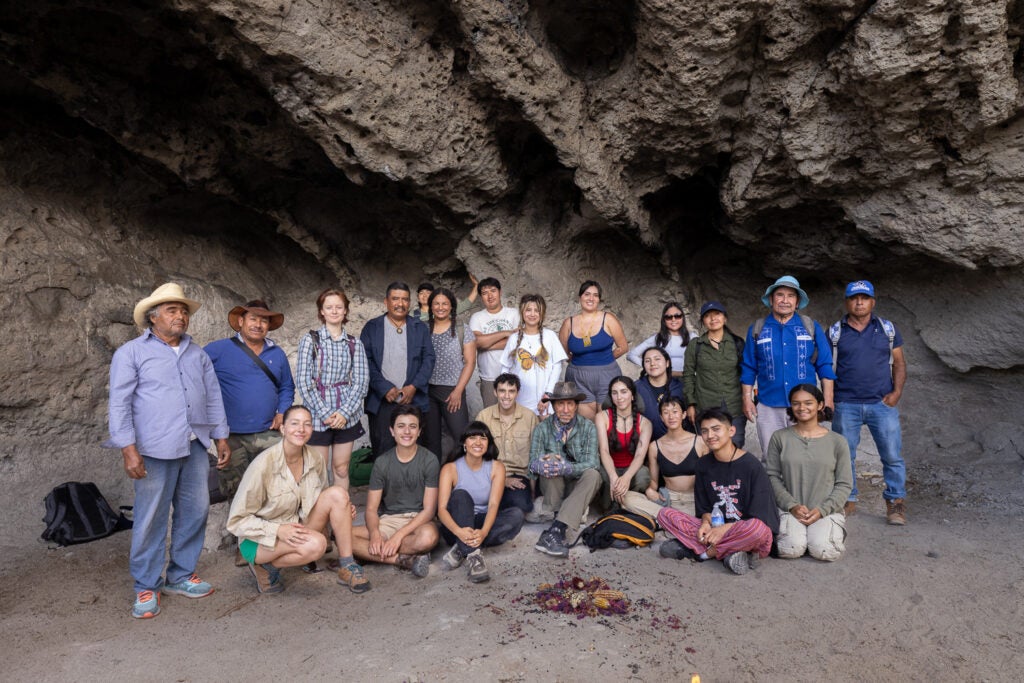
Local guides brought the course participants to Guilá Naquitz Cave, the earliest known site of domestication of teosinte, a grass which has become what we now know as maize, or corn. (Image credit: Andrew Brodhead)
Food for thought, food for bodies
The seminar began at the National Autonomous University of Mexico (UNAM) in Mexico City. There, they met scientists unraveling the ecology and genetics of plant domestication and ethnobotanists documenting Indigenous knowledge of plant ecology. The students then visited the National Commission for the Knowledge and Use of Biodiversity (CONABIO), also in Mexico City, where researchers catalog the species comprising the country’s plentiful biodiversity. This includes agrobiodiversity – biological richness resulting from agricultural species’ interactions with human cultures over thousands of years.
The students then traveled to Oaxaca to see how the biodiversity and agrobiodiversity studied at UNAM and CONABIO infuses the daily lives of rural communities.
Starting at an open-air market, students meandered down tarp-shaded aisles to talk with vendors at stands bursting with fruits and vegetables, roots and tubers, bundles and bottles of herbs and spices, and even insects. Even with such a wide variety, the students discovered that most of those crops originated in Mexico. And of those, most came from local farmers and gatherers – a testament to the combined biological and cultural diversity of Oaxaca, which Dirzo said ranks among the highest in the world.
“We documented all of the different types of produce they were selling, which was crazy!” said Kylie Creighton, a rising third-year Earth systems major. “It was so much more diverse than United States markets.”
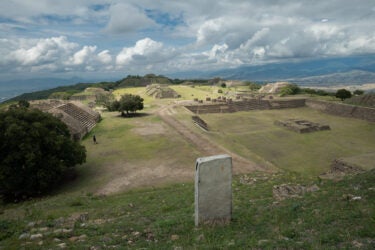
Image credit: Andrew Brodhead
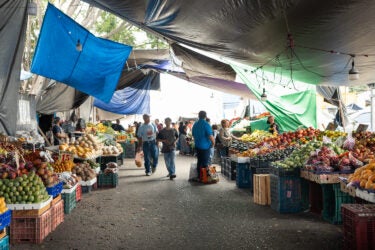
Image credit: Andrew Brodhead
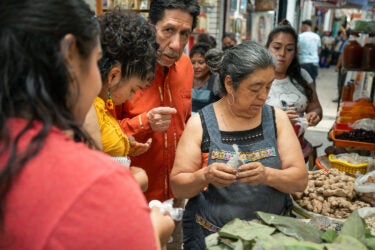
Image credit: Andrew Brodhead
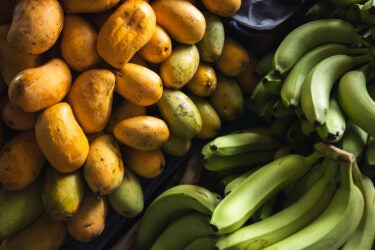
Image credit: Andrew Brodhead
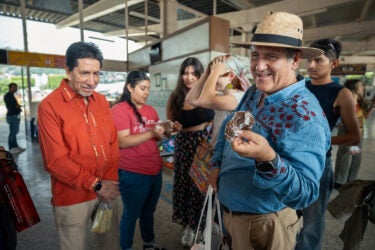
Image credit: Andrew Brodhead
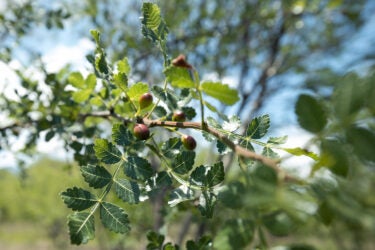
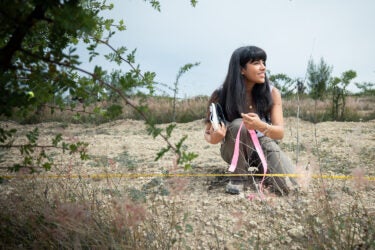
Image credit: Andrew Brodhead
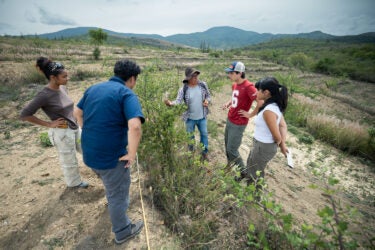
Image credit: Andrew Brodhead
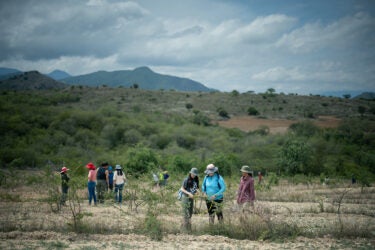
Image credit: Andrew Brodhead
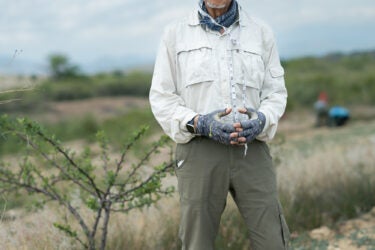
Image credit: Andrew Brodhead
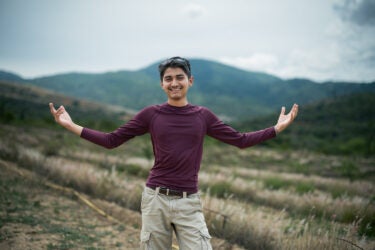
Image credit: Andrew Brodhead
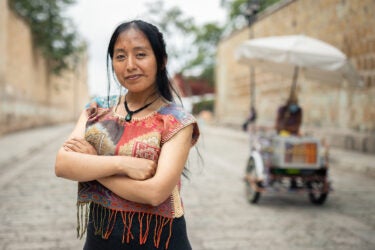
Image credit: Andrew Brodhead
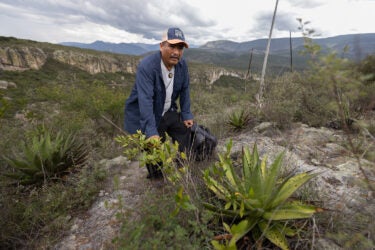
Image credit: Andrew Brodhead
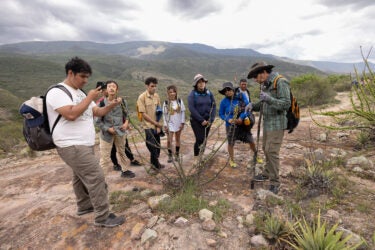
Image credit: Andrew Brodhead
The trees speak to us, and we care for them
The group then moved on to the town of San Martín Tilcajete, home to an environmental and agricultural conservation organization called Palo Que Habla – “The Tree that Speaks to Us,” Dirzo translated.
The tree in question, the copal, has soft, white wood, perfect for carving. Creighton recalled an artisan using a machete to slice logs into animal shapes for his daughter to paint.
“See how detailed the artwork is?” She held up a statuette – an “alebrije” – of a prowling jaguar, painstakingly adorned in a rainbow of tiny geometric patterns .
The sale of alebrijes, a type of folk art sculpture, plays a significant role in the local economy. But as previous iterations of Dirzo’s seminar helped confirm by analyzing nearby copal populations, the alebrijes’ growing popularity has begun to diminish the area’s wild copal forests. In response, through Palo Que Habla, the community now manages protected stands of agricultural copal, planted both as monocultures and in biodiverse plots alongside other native plants – which is where this most recent cohort found a way to build on previous cohorts’ research.
“You want not to impose what you want to study, but to engage in a dialogue with these communities,” Dirzo said. Instead, he emphasized co-designing research alongside local people. “Think together of what would be of interest to them and which you can provide in some analytical way.”
Taking this approach, the class set out to assess and compare the copals’ performance under both planting scenarios, taking physical measurements of trees and gathering verbal assessments of their health from local experts. Their findings will be written up in Spanish for the community to use in its copal management, completing another of Dirzo’s lessons: the importance, as visiting scientists, of giving back to those who host you.
For Creighton, the copal forests revealed how deeply protected areas and human communities can interweave – another instance of bio-cultural diversity in action.
“We met community members who depend on that protected area for their work and their art,” she said, contrasting this against popular notions of protected areas in the U.S. “In your head, you think of a national park that’s far away from everybody. But a lot of times, biodiversity is in people’s neighborhoods.”
Their next stop, at a timber pine forest in the Mexican Sierra, reinforced that point. The people of the local community of Ixtlán de Juárez own the forest communally, with each person bearing a responsibility to volunteer their labor to manage it – an Indigenous custom of community service known as “tequio.” In this case, tequio might mean clearing dry brush, performing controlled burns, culling diseased trees, or planting new ones.
Hope Adhanom-Shipman, also a rising third-year Earth systems major, said learning about tequio broadened her view of what biodiversity management could look like from a social perspective. And it wasn’t limited to the timber forest: near the Guilá Naquitz Cave, locals performed tequio by patrolling the surrounding forest for miles every day, guarding against poachers hoping to cut trees, harvest agave, or hunt jaguar.
“It was just so different from systems in the U.S. It was like, ‘Wow, a different system is possible, and it’s working somewhere!’” she said. “When you’re only used to what you know, it’s hard to think of new solutions.”
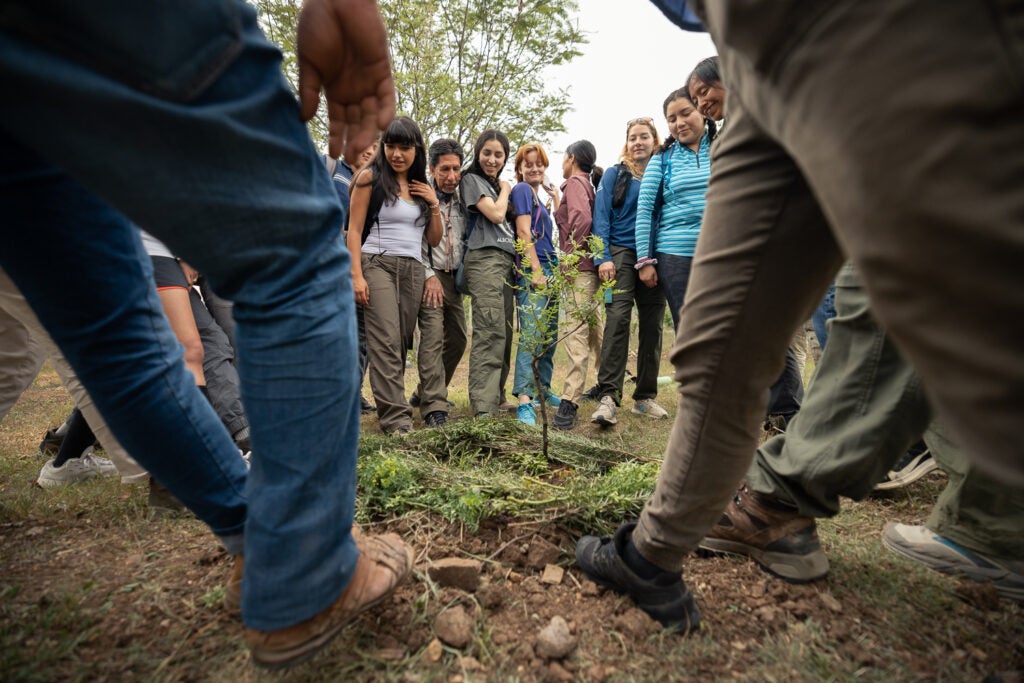
The seminar conducted an ecological survey and conservation analysis of tropical dry forest and copal trees, like the one seen here. (Image credit: Andrew Brodhead)
An unbreakable connection
Providing opportunities for students to experience how another culture brings its own perspectives and solutions to conservation challenges, Dirzo said, motivated him to create the course in the first place – especially as both biodiversity and cultural diversity face existential threats.
“In some sense, it’s a response to the crisis I see – the dilution of biological richness and the dilution of appreciation of the diversity of cultures,” he said.
That trend affects cultures even from within. Many of the Indigenous people the class met said they were losing their native Zapotec languages – and with them, Dirzo pointed out, art forms, worldviews, and relationships to biodiversity inexpressible in other tongues.
The loss of cultural expression impacts not just Indigenous peoples, but the entire world. Again, maize offers a prime example: thanks to a diversity of Indigenous peoples cultivating it in different places in their own unique ways, Dirzo explained, we now have a vast range of maize varieties adapted to different climate conditions. This improves the odds that as climate patterns change, certain varieties of this globally crucial crop might still flourish.
“These peoples have created solutions by engaging in this coevolutionary process,” Dirzo said. “It is critical to recognize that biological and cultural diversity are essential and linked if we aspire to have a more sustainable world.”
In this course, humanities and sciences come together. That combined focus, Adhanom-Shipman said, should make the seminar appealing to students who, like her, seek to bridge the gaps between a wide range of seemingly disparate interests.
“A lot of times, discussions around nature treat humans as something ‘other.’ But to me, the main takeaway of this course was understanding how human systems affect environmental systems and how environmental systems affect human systems,” she said. “It’s all interconnected. The distinction between the two is just kind of made-up.”
Dirzo is also a professor of biology in the School of Humanities and Sciences and of Earth system science in the Doerr School of Sustainability, and a senior fellow at the Woods Institute for the Environment.
